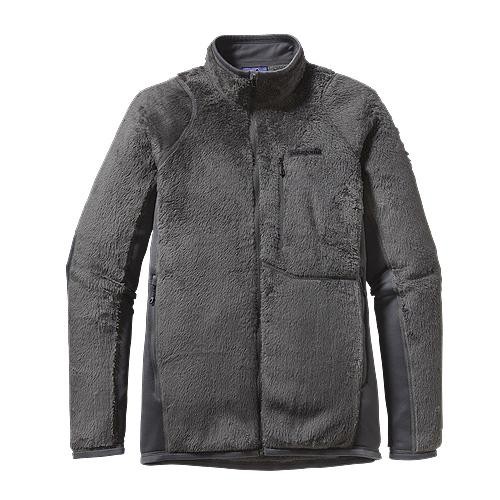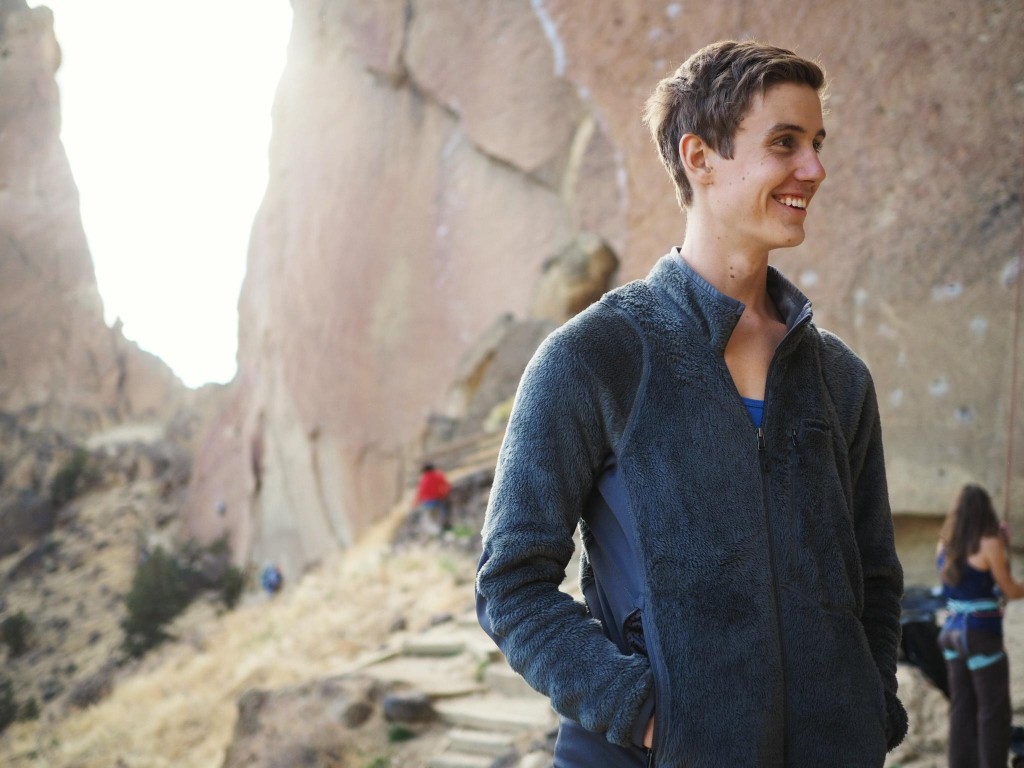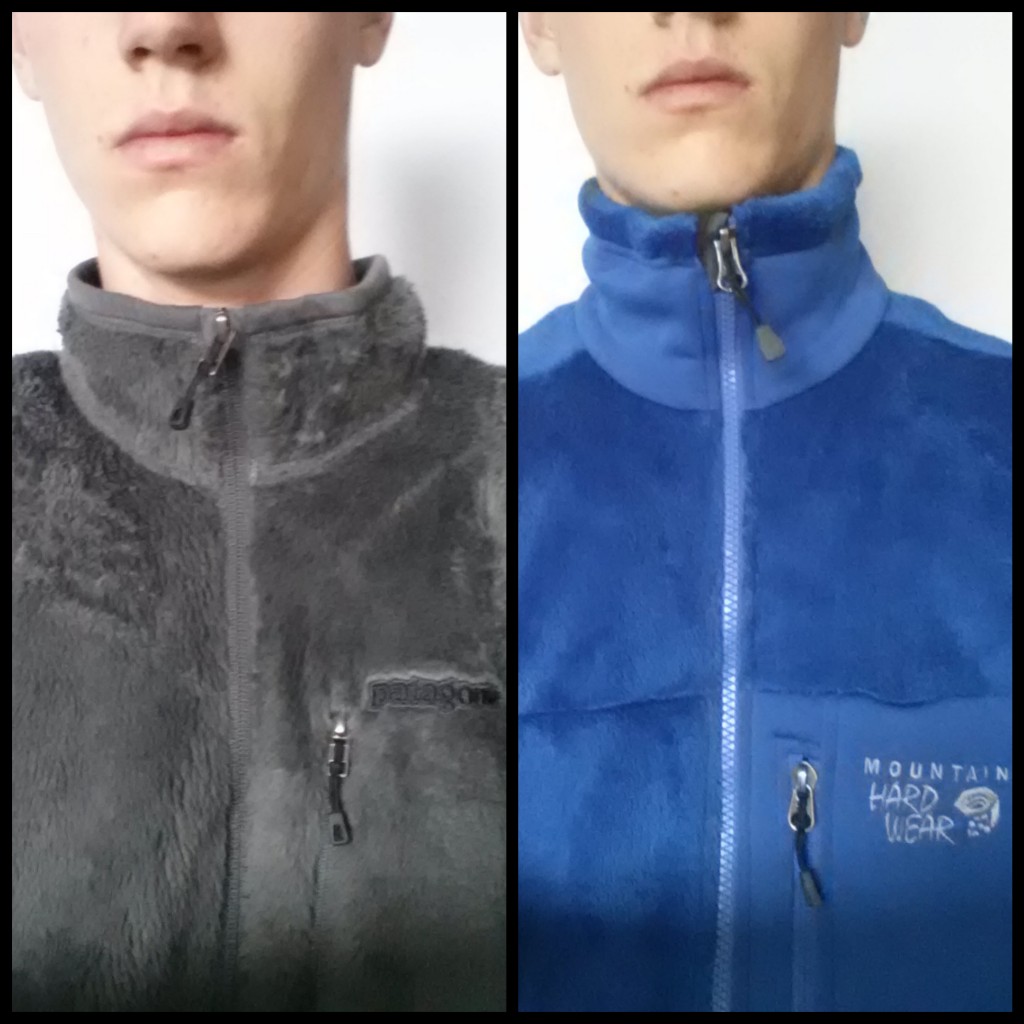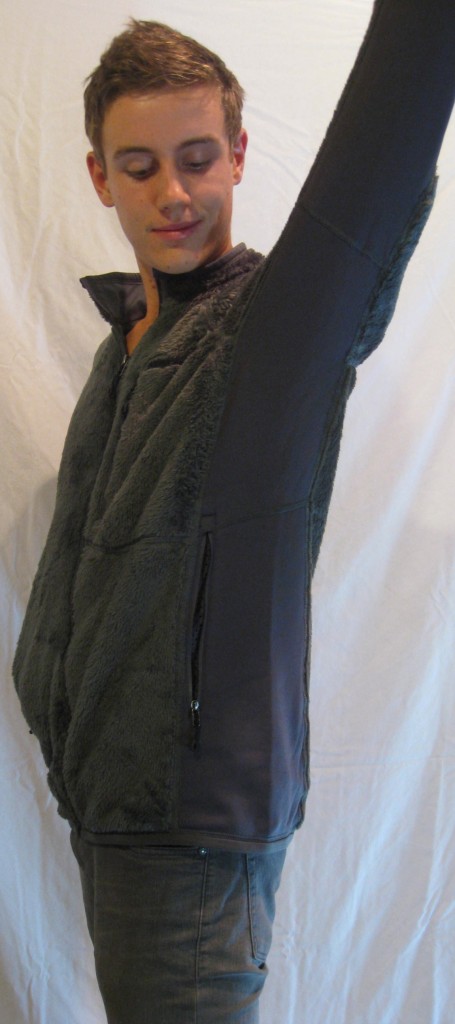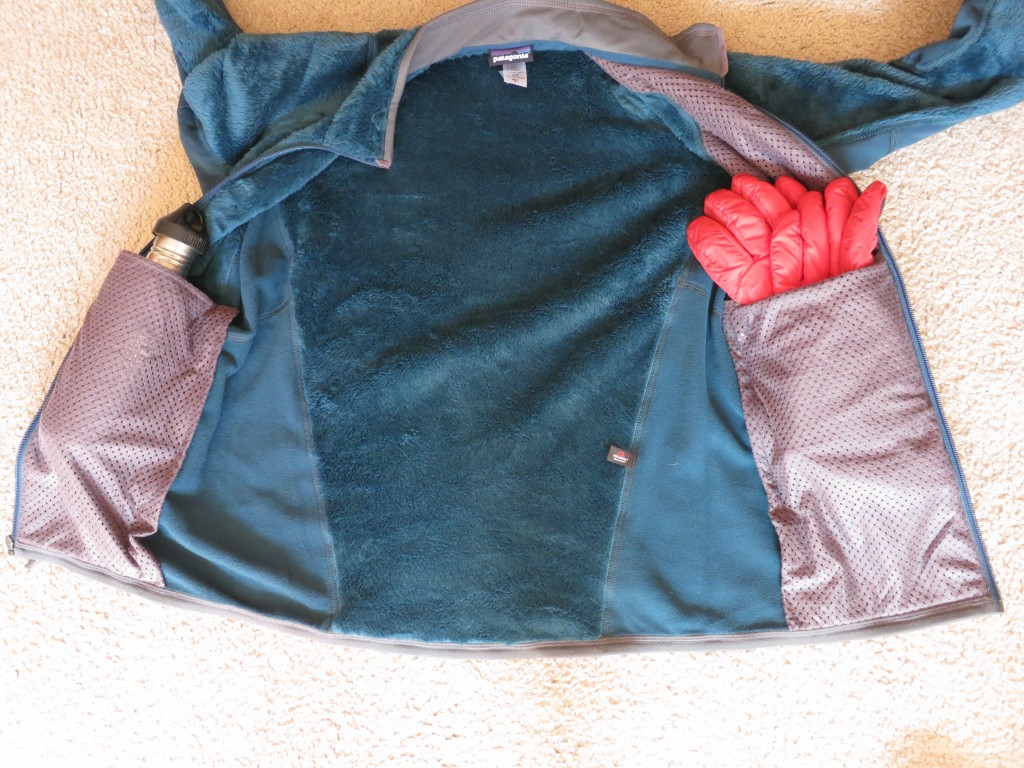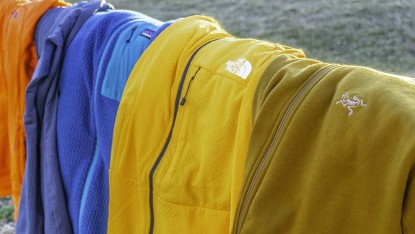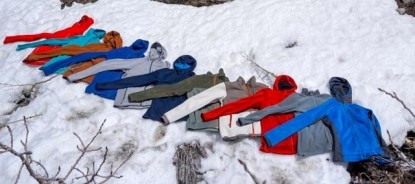The Patagonia R3 Jacket is one of the warmest technical non-hooded fleece jackets we tested. As it was a Top Pick in last year's review, testers were curious to see how this fleece would stack up to some of the newly re-designed products in our updated 2014 review. While other high-loft models HAVE improved, the Patagonia R3 remains our go-to high-loft fleece for outdoor adventures on extremely cold days. We are pleased, again for 2014, to offer this model our Top Pick for High-Loft Fleece.
At a modest weight of 14.9 ounces, this model packs a tremendous amount of warmth into a small package. We prefer it to the also revised Patagonia R2 because it is warmer, has larger hand warmer pockets, looks better and only weighs 1.6 ounces more than the R2. Whether it be a frigid day on the ski hill, a bitter cold climbing trip or a fall football game, the R3 is our testers' favorite fleece for active use in frigid conditions AND for casual use around town. This jacket is considerably warmer and looks more attractive the Patagonia R1 Hoody.Patagonia R3 Jacket Review
Our Verdict
Our Analysis and Test Results
The supremely warm and cozy Patagonia R3 is a fantastic layer for the most frigid of days. Although it is a bit too warm for active use on all but the coldest days, it is easy to appreciate the warmth of this layer when you are stuck with a long belay on a cold winter morning.
Performance Comparison
Warmth
Patagonia's description of this fleece mentions Baffin Island, Antarctica and the Himalaya in winter. We agree that this fleece is well-suited to temperatures found in those places. This high-loft fleece is ridiculously warm and cozy! It is, perhaps, twice as thick as the R1 and you can feel its soft fibers trapping your body heat as soon as you put it on. The Patagonia R3 is also considerably warmer than the Patagonia R2 due to the continuous and warmer front panels of high-loft fleece and slightly thicker non-grid side panels. The drawback to all of this warmth is you need to either be actively using the jacket (climbing, skiing, mountaineering) in frigid temperatures (below to way below freezing) or wearing it for periods of low activity in more moderate temperatures (camping, around town, etc.) For example, this is a fantastic fleece for standing around in the cold while watching a ski race, for snowmobiling, or ice fishing. We also reach for our Top Pick winner for super cold days of climbing and skiing when we put a hardshell jacket over it. On super cold days it also makes a great layer to slide under a puffy for long belays.
The only other fleece that matches the coziness of the Patagonia R3 is, again, the Mountain Hardwear Monkey Man 200. The snug and tall collar of the Monkey Man coupled with its thick elastic waist and wrist cuffs make it a tough competitor. Testers debated long and hard over which one was warmer.
Comfort
It's impressive that a fleece this warm can also be supremely comfortable and offer a full range of unrestricted movement. Patagonia accomplished this by wrapping the stretchy side panel fabric around the elbows and down the underside of the arms. Moving your arms around and overhead is effortless because the fleece moves with you and stretches when needed. The same cannot be said for some hardface models, such as the Marmot Front Range, which lack the super stretchy properties of the Patagonia R3. The freedom of movement is part of what makes this product shine.
The only uncomfortable part of this fleece is the wrist cuffs, which have a narrow elastic range; you can only stretch them a small amount before they no longer expand. The author found it to be somewhat uncomfortable to insert his hands through the smallish cuffs and very uncomfortable to try to pull the sleeves up to his elbows. This observation reinforces the fact that the Patagonia R3 is a cold weather jacket. The Monkey Man 200, on the other hand, has thick and stretchy elastic wrist cuffs that easily roll up to the elbow. This feature is nice to have on cold climbing days when you need some extra heat on warmup climbs. Other, lighter weight fleeces like the R1 Hoody are designed to be comfortable when pulled up to the elbows for when you're working hard in warmer temperatures. Despite this small drawback the R3 is very comfortable. This high-loft fleece is just about as soft and cozy as it gets. People will probably want to hug you.
Wind Resistance and Breathability
Like most technical fleeces, this one has very poor wind resistance and excellent breathability. However, even though it's very breathable, it is so warm that it feels a bit stifling when used for moderate exertion activities in all but the coldest conditions. It is certainly not the type of layer you would wear for a cool morning jog. However, if the fleece does somehow get wet or sweaty, the material dries quickly. Add one of our favorite windbreakers or a top-rated hardshell jacket for increased weather protection.
Weight and Packed Size
A size medium weighs 14.9 ounces on our scale. This makes it 2.2 oz. heavier than the R1 Hoody — so it is shockingly warm for its weight. Though it packs down small by most standards, the supremely packable R1 Hoody and Arc'teryx Fortrez Hoody compress considerably smaller and can fit into super small nooks in your pack better than this model.
Style and Fit
The Patagonia R3 has a more sleek appearance than the R2, and testers agreed that it was the most stylish of the high-loft models. It finds a great balance between sleek and furry, plus the fleece has a slight shiny quality. It really is about as stylish as you can get with a high-loft technical layer. One of the testers even described the look as “high fashion.” The body of the fleece is long, slim, and fits well with the contours of a body. It seems that Patagonia really put a lot of thought into perfecting its fit. It slides nicely under a jacket without bunching, yet is loose enough to avoid looking awkward and overly technical when worn as a top later. Although you might look a little out of place wearing this layer at a trendy bar or restaurant in the city, it is perfectly suitable to wear in a climber or hiker hangout.
Features
This model has nearly the same features as the R2: two handwarmer pockets and a chest pocket. The chest pocket is critical because it can be accessed easily on the go with a harness, pack or outer layer on. The handwarmer pockets are lined with a mesh jersey style material and are not quite as cozy as the fleece-lined pockets found on other models. However, they double as an inner drop-in pocket. We've found this latter feature to be very useful for winter trips where we store a water bottle, gloves, or electronics inside the jacket.
Limitations
Unlike hardface fleeces, our Top Pick award winner and all other high-loft fleeces tend to get dirty easily. Their long fibers collect adventure grime and spilled food very well. But this is a minor drawback that's more than offset by the fleece's fantastic performance in other areas. If you want a jacket that works better as an outer layer for around town, consider a hardface fleece like the Marmot Front Range, Arc'teryx Fortez or a softshell like the Patagonia Adze.
Best Applications
Winter skiing, climbing, mountaineering, around town. In most cases, this model is too warm and too heavy for backpacking.
Value
The Patagonia R3 costs $20 more than the R2. We feel that this additional amount is worth paying because it is considerably warmer, has better features and looks better. The only thing that makes this model a poor value is its limited versatility. A lighter jacket with a hood such as the R1 Hoody can be used for many more activities in a much wider range of temperatures. Lighter layers like the R1 are also much more useful and comfortable for activities that require unencumbered upper body movement like technical rock climbing.
Conclusion
This is our favorite fleece for active use in very cold conditions or for hanging around in the cold. Providing a great balance of performance, style, and warmth, the Patagonia R3 stands out as our Top Pick for High-Loft Fleeces.


